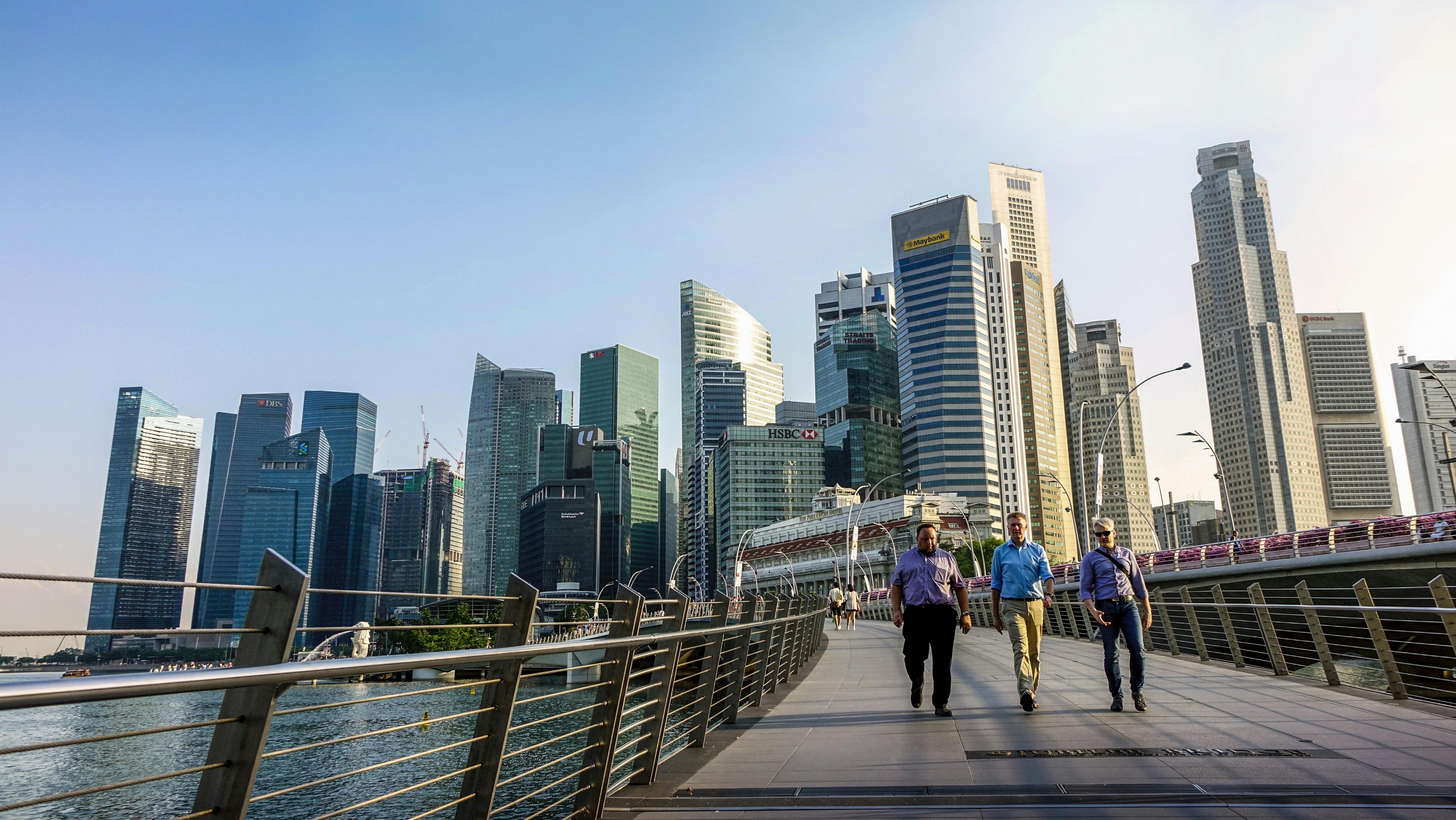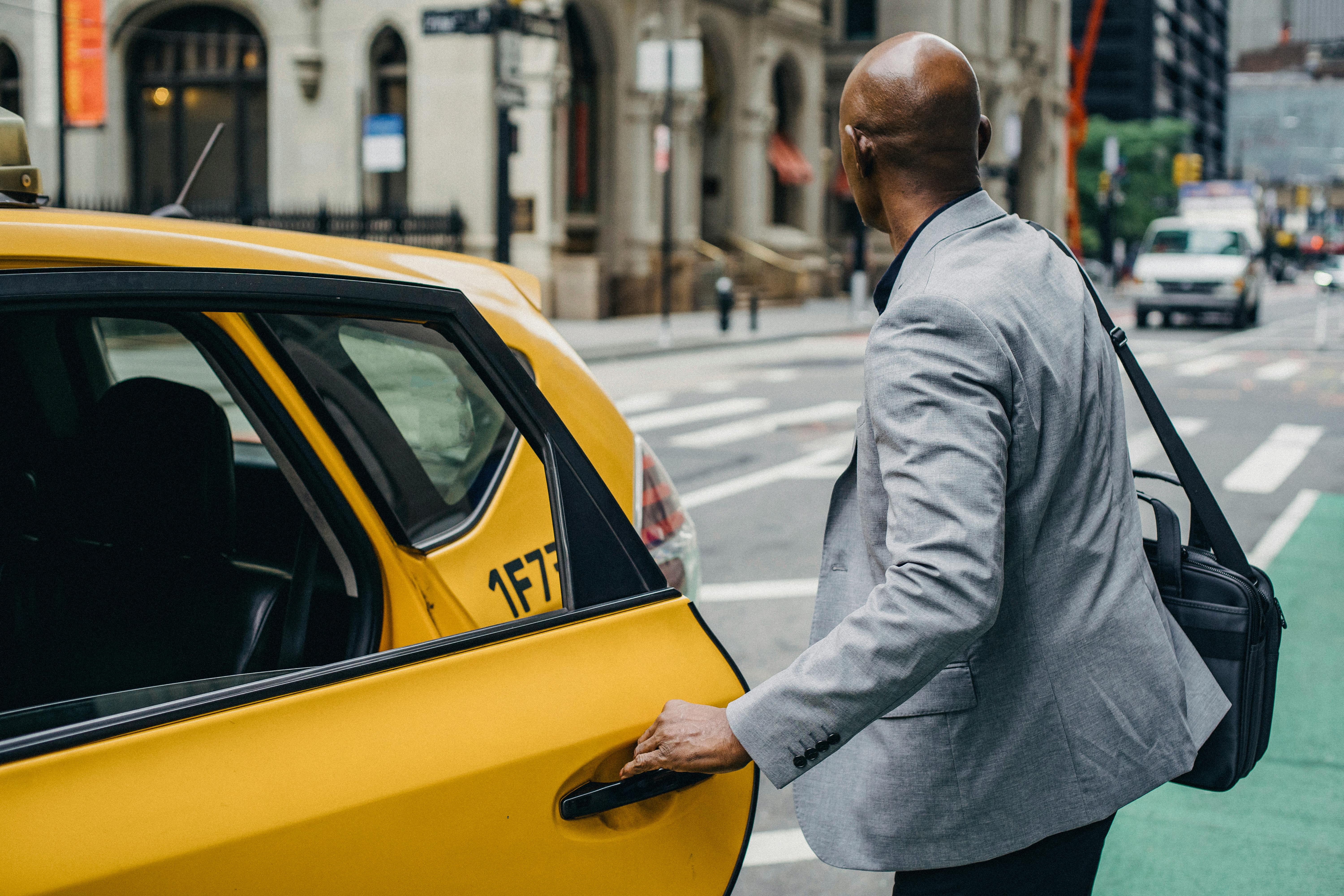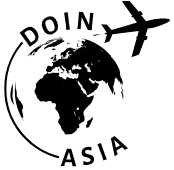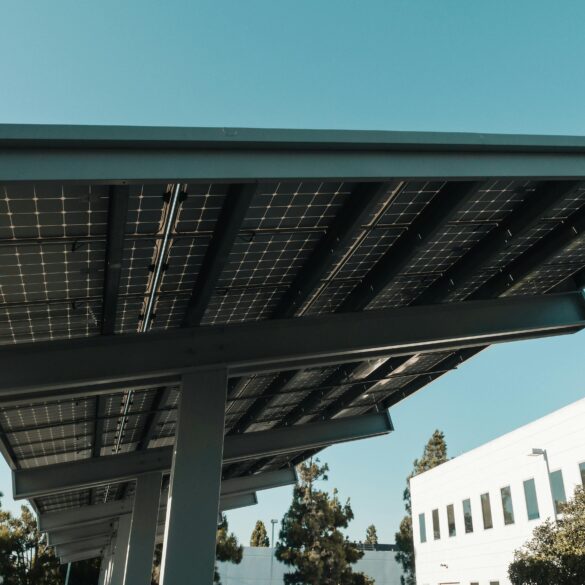Singapore Corporate Hospitality Playbook: Efficient Executive Itineraries and High-Value Client Engagement
While many destinations promise sparkle, Singapore corporate hospitality delivers something rarer: frictionless efficiency that respects an executive’s time while deepening trust with clients. In my experience, when you orchestrate a two-day program here—tight transfers, purposeful meetings, and experiences that feel personal rather than performative—you get meetings that actually move deals. I’ll be completely honest: I used to over-stuff agendas; nowadays I design for breathing room and intent. The result? Fewer “nice-to-have” moments and more “that sealed it” conversations.
Context matters. Singapore welcomed a strong rebound in visitors recently, with official tourism statistics underscoring a resilient, high-quality pipeline of meetings, incentives, conferences, and exhibitions (MICE)1. EDB’s positioning of the country as a trusted hub adds weight—when your guest lands at Changi and glides through passport control, your brand borrows that trust halo, more or less2. And in global travel and tourism readiness rankings, Singapore’s steady performance signals what executives notice immediately: tight infrastructure, safety, predictability, and a modern service ethos11. In short, it’s a city designed for business, but also—quietly—built for meaningful hospitality.
Why Singapore Works for Corporate Hospitality
Having worked on executive programs across Asia, what really strikes me about Singapore is the consistency. Transfers rarely slip. Reservations hold. Even rain—inevitable here—rarely derails plans because there’s always a sheltered, equally compelling backup. Actually, let me clarify that: the magic isn’t just reliability, it’s the compounding effect of small certainties—short immigration lines, accurate ETAs, high service standards. Changi Airport’s operations and connectivity make fast in/outs feasible even on dense schedules4. By and large, when you promise a 90-minute window from touchdown to boardroom, you can keep it.
Meanwhile, Singapore’s positioning as a neutral, trusted business hub—rule of law, stable policy environment, and deep sector expertise—positions your hospitality in a context of seriousness and safety2. Clients feel looked after without being smothered; it’s professional, not performative. I used to think hospitality required grand gestures. Now I lean toward precision: the right room layout, a lunch that respects dietary needs without fuss, a post-meeting walk with just enough privacy for real talk.
“Efficiency is doing things right; effectiveness is doing the right things.”
Changi Airport consistently ranks among the world’s best, with extensive airlinks to major business hubs and a reputation for operational reliability that reduces transfer uncertainty for tight agendas4.
Content Strategy Summary and Audience Fit
Let me step back for a moment and outline how this playbook is built. This is B2B services and Technology/SaaS oriented (though finance and consulting leaders will feel at home). The content classification is Educational with a Thought Leadership lens. The goal? Consideration to Decision: give you frameworks and checklists you can implement next week. We’re speaking to mixed audiences—executive assistants, chiefs of staff, regional sales leaders, and partnership heads—who need strategic clarity and on-the-ground practicality. I’ve designed it to serve a 24–72 hour visit pattern with options for deeper engagements and social dinners that, frankly, make or break trust.
- Novice readers get definitions and simple itineraries.
- Intermediates get frameworks, vendor types, and sequencing tips.
- Experts get measurement, ROI logic, and sustainability levers.
Key Promise
I’ll show you how to compress time without compressing humanity—efficient executive itineraries and authentic client engagement, grounded in Singapore’s infrastructure and service culture, with practical templates you can adapt.
Foundations: Time, Intent, Personalization
How do you explain this? The best corporate hospitality here rests on three pillars. First, time mastery: shaving minutes across arrivals, transfers, and pre-briefs. Second, intent density: line up each touchpoint to serve a commercial goal (rapport, discovery, alignment, commitment). Third, personalization: small signals that say “we prepared for you”—not ostentation, but relevance. Academic and industry literature keep pointing to experience quality as the hidden hand behind satisfaction and loyalty in hospitality and B2B services891011. I’m not entirely convinced one-size-fits-all playbooks ever worked; the trick is adaptive structure.
- Time: Pre-clear preferences, pick venues within a 10–15 minute radius of meetings, and front-load high-stakes conversations early in the day.
- Intent: Tie each activity to a question: discovery, validation, or commitment?
- Personalization: Dietary respect, cultural nuance, industry-relevant venues (labs for tech, galleries for design-minded clients).
Executive Essentials: Logistics That Win Minutes
Here’s what gets me: most schedules fail in the margins. Ten minutes lost at curb, seven minutes at a check-in, and suddenly you’ve squeezed the oxygen out of a closing conversation. Singapore gives you the raw materials to avoid that. Use reliable airport transfers (Changi’s landside efficiency helps4), cluster meetings around the CBD/Marina Bay, and consider walkable transitions—surprisingly effective for informal debriefs. According to country and international indices, the city’s infrastructure, safety, and service enable tight sequencing without that brittle, stressed feeling11. On second thought, I should add: always build a 15-minute “margin pocket” before pivotal meetings. It’s the cheapest hedge you’ll ever buy.
The Efficient Executive Itinerary Framework (24–72 Hours)
Back when I first started planning executive trips, I equated “busy” with “productive.” Funny thing is, the deals that stuck were forged during concise, well-spaced agendas with time to think—imagine that. Currently speaking, my baseline in Singapore is a modular framework: 24-hour “precision sprint,” 48-hour “deep-dive,” and 72-hour “portfolio” visit. These are not cookie-cutter; they’re scaffolds. Research on corporate travel continues to show recovery and a renewed focus on purposeful trips with measurable outcomes56. And yes, ROI from face-to-face meetings remains compelling, provided we design for intent density rather than calendar chaos7.
Core Principle
Reduce “context switching.” Cluster meetings by theme and geography. I need to revise my earlier point: it’s not just about saving minutes—it’s about preserving executive cognition for the hard conversations.
48-Hour Deep-Dive Blueprint
- Arrival (AM): Pre-arranged curbside transfer. In-car brief (2 minutes max). Buffer on arrival at the hotel (15 minutes—non-negotiable).
- Day 1 Midday: Signature client meeting near Marina Bay. Working lunch with curated menu (allergies/preferences already handled).
- Afternoon Slots: Two thematic meetings (discovery and validation). Short walk between venues for an informal debrief.
- Evening: Private dining room—small group, soft seating for post-dinner conversation. Wrap before 9:30pm. No heroics.
- Day 2 Morning: Site immersion (lab, innovation center, or partner facility) followed by a strategic alignment meeting.
- Departure: Buffer back to Changi; remote wrap-up call en route if needed.
Sample 48-Hour Schedule Table
| Time Block | Activity | Location | Objective |
|---|---|---|---|
| Day 1, 08:30–09:15 | Airport Transfer + In-car Brief | Changi → CBD | Context setting |
| Day 1, 10:30–12:00 | Strategic Meeting | Marina Bay | Discovery |
| Day 1, 12:15–13:30 | Working Lunch | Private Room | Rapport + Ideation |
| Day 1, 15:00–16:00 | Validation Meeting | Downtown Core | Feasibility Check |
| Day 1, 18:30–21:15 | Private Dining | City/Marina | Commitment Signals |
| Day 2, 09:00–10:30 | Immersion Visit | Facility/Innovation Hub | Proof + Confidence |
I go back and forth on how much to script in advance. The more I consider this, the more I prefer “guardrails with optionality.” According to current research, corporate travel budgets are favoring trips with clearer business cases and executive presence where it matters most56. That aligns with what I’ve seen: skip the broad roadshow; go narrow and deep with the top two accounts. The result? Fewer meetings, bigger outcomes.
Venue and Experience Selection: Purpose First, Wow Second
Honestly, I reckon the “wow” should serve a point. Private dining rooms near the CBD cut travel time and provide acoustic privacy. A short gallery walkthrough can kickstart a creative conversation—with zero grandstanding. This is where Singapore’s dense, high-quality urban core shines. Marina Bay Sands’ ongoing investments underline how top-tier venues keep raising the bar for meetings and hospitality experiences13. Meanwhile, Michelin-recognized options (at various price points) make it easy to craft culinary experiences that feel special but not showy14.
- Pick venues within 10–15 minutes of the day’s anchor meeting.
- Ensure private spaces (acoustics > aesthetics, if you must choose).
- Confirm menus 48 hours prior; send a personal note acknowledging any preferences.
“The best hospitality removes friction so the relationship can move forward.”
People Also Ask: Quick Answers
- What’s the ideal trip length? 48 hours for depth without fatigue; 72 hours if you need site immersion.
- Where should I base meetings? CBD/Marina Bay—short transfers, high venue density, predictable operations.
- How do I measure success? Pre-define intent for each touchpoint, then track commitment signals (next steps, documents requested, pilot dates).
Planner’s Checklist (Print This)
- Airport transfer booked with driver’s name, plate, and live tracking.
- Dining preferences confirmed; quiet table or private room secured.
- 15-minute buffer before key negotiations; supporting materials pre-staged.
- “Plan B” for weather; indoor alternative within 5–10 minutes.
The result? Incredible. Not because of theatrics—because the right conversations get the time and space they deserve. And then… everything changed for one client last quarter when we swapped a flashy detour for a focused site visit; the post-meeting dinner felt earned, not forced. That’s hospitality with a business backbone.

High-Value Client Engagement: Experiences That Advance Trust
Ever notice how the conversation shifts after a shared experience that actually relates to your client’s world? I’m partial to curated micro-experiences: a lab walkthrough for a tech partnership, a gallery talk for a design-led brand, or an executive breakfast facing the water (simple, calm, focused). According to hospitality and service research, experience quality and personalization are strongly linked to satisfaction and loyalty810. In B2B contexts, customer experience spans the whole journey—pre-briefs, on-site cues, and post-event follow-through9. The more I think about it, the less I chase “wow” and the more I engineer relevance.
“Design experiences the way you design products—around user needs, not organizer vanity.”
Curated Options (Purpose-First)
- Executive Breakfast + Agenda Walkthrough: 45 minutes, private room, screen off. Focus: alignment.
- Immersion Visit: Partner’s innovation lab or a neutral showcase space. Focus: proof.
- Private Dining: Menu curated for dietary needs; round table; noise control. Focus: rapport and commitment.
- City Moment: A short waterfront walk or gallery talk—no “tour.” Focus: decompression and connection.
Compliance, Ethics, and Cultural Nuance
Let me be crystal clear: high-value hospitality must stay above reproach. Singapore’s anti-corruption framework is robust, with CPIB guidance and the Prevention of Corruption Act setting strict expectations316. I used to think a generous gesture was always appreciated; I’ve learned the safer path is transparent, modest, and business-aligned. Gifts are tricky—many firms outright prohibit them—so focus on professional experiences tied to meetings and value creation. Actually, thinking about it differently, your best “gift” is competence and consideration.
- Keep hospitality reasonable and proportionate to the business context.
- Avoid personal gifts; prefer shared, business-relevant experiences.
- Document attendees, costs, and purpose for internal compliance.
Seasonally, major events can be strategic anchors—used thoughtfully. The Singapore Grand Prix, for instance, is a world-class spectacle and a serious hospitality platform when leveraged responsibly and with clear business purpose12. I’m not entirely convinced every brand needs trackside drama, but if your clients genuinely value it, you can architect a low-friction, high-context evening with short transfers and firm curfews. Otherwise, a Michelin-recognized spot with a private room may be, frankly, way, way better for substance14.
Sustainability and Accessibility
Previously, sustainability lived in the “nice-to-have” bucket. These days, it’s a credibility marker. Singapore’s MICE Sustainability Roadmap outlines concrete goals for greener events and supply chains17. Meanwhile, you can pick venues that reduce cross-town travel, select menus with sustainable options, and ensure accessibility for guests with mobility or sensory needs. Small moves, big signals.
Practical Sustainability Levers
- Cluster meetings to cut transport emissions and fatigue.
- Choose venues aligned with sustainability certifications or goals.
- Offer non-alcoholic, culturally sensitive alternatives by default.
Engagement Design Matrix: From Venue to Outcome
| Venue Type | Typical Capacity | Lead Time | Likely Outcome |
|---|---|---|---|
| Private Dining Room (CBD) | 6–10 | 1–2 weeks | Rapport + Commitment Signals |
| Innovation Lab/Showcase | 4–12 | 2–3 weeks | Validation + Proof |
| Hotel Boardroom (Marina) | 6–14 | 3–7 days | Alignment + Next Steps |
| Event Anchor (F1) | Varies | 4–8 weeks | Memorability + Relationship Depth |
Which reminds me: the environment shapes conversation quality. Bloomberg’s coverage of Marina Bay Sands’ expansion underscores how the ecosystem keeps evolving to host serious business and hospitality in one integrated precinct13. Pair that with culinary excellence noted in the Michelin Guide and you have a canvas that’s robust and versatile—no spectacle required14.
“In B2B, trust accrues through repeated, coherent experiences more than single peaks.”
Okay, let’s step back. If you remember one thing, remember this: your hospitality choices either conserve executive energy and focus—or they deplete it. Choose conservation. The conversation that closes the deal rarely happens while rushing.
Measurement, ROI, and Operational Playbacks
I’ll be completely honest: I used to measure hospitality success by smiles and anecdotes. These days, we still value those—but we also track tangible signals. Industry analyses continue to argue that purposeful travel drives outcomes when we align agendas with revenue moments567. My current thinking is straightforward: define the intent of each touchpoint in advance, then capture outcomes within 72 hours while memory is fresh.
KPI Snapshot (Simple, Human, Useful)
| Touchpoint | Intended Outcome | Signal Captured | Follow-up Owner |
|---|---|---|---|
| Strategic Meeting | Discovery | New stakeholder map; problem statements | Account Lead |
| Immersion Visit | Validation | Feasibility notes; risk flags | Solutions Architect |
| Private Dining | Commitment | Pilot timing discussed; stakeholder sponsor | Executive Sponsor |
Post-Trip Cadence (72 Hours)
- Send tailored recap emails (one per stakeholder cluster) within 24 hours.
- Schedule a 20-minute internal playback to lock next steps.
- Log signals (pilot dates, document requests, budget windows) in CRM within 72 hours—no exceptions.
Common Pitfalls (And How to Avoid Them)
- Over-programming: Leaves no room for real talk. Fix: Build two 15-minute buffers per day.
- Venue Noise: You cannot hear commitment in a loud room. Fix: Private spaces with acoustic control.
- Compliance Blind Spots: Risky gifts or optics. Fix: Align with CPIB guidance and PCA constraints316.
- Logistical Drift: Shaky transfers and long hops. Fix: CBD/Marina clustering; Changi buffers4.
Putting It All Together: A Simple Template
Here’s a template I use, give or take. Adapt freely.
- Meetings: 2–3 per day, theme-clustered, 60–75 minutes each.
- Meals: Working lunch day 1; private dining evening day 1; light breakfast day 2.
- Experience: One short, relevant immersion or gallery moment.
- Logistics: Walkable or sub-10-minute transfers; curbside buffers.
- Follow-up: Recaps within 24 hours; internal playback by 72 hours.
“If it is important, do it slowly.”
Conclusion: The Singapore Advantage, Used Wisely
What should I have mentioned first? Probably this: Singapore gives you a remarkable canvas—reliability, density, professionalism—that lets you host with restraint and intention. The more I design here, the more I value subtlety. You do not need spectacle; you need space for decisions. Use the city’s strengths—Changi’s efficiency, the CBD’s walkability, the culinary depth—to conserve attention for what matters. Your clients will feel it. And yes, they’ll remember how you made the work easier.
Call to Action
Take one upcoming visit and redesign it using this playbook. Strip one activity, add two buffers, and swap a flashy “wow” for a relevant immersion. Then measure the quality of the conversations. You’ll see the difference.
References
Official tourism performance figures and analysis.
Positioning of Singapore as a trusted global business hub.
Guidance on corruption definitions and expectations.
Operational highlights, connectivity, and infrastructure facts.
Trends and scenarios for corporate travel’s return and purpose.
Annual outlook on corporate travel budgets and priorities.
Evidence on business travel’s role in sales and productivity.
Determinants of hotel guests’ satisfaction and implications.
B2B customer experience: Systematic review and agenda.
Evidence linking experience quality to loyalty outcomes.
Comparative readiness and enabling environment indicators.
Major event context relevant to hospitality strategy.
Ongoing investments in Singapore’s meetings and hospitality capacity.
Dining landscape and recognition across price points.
Legal framework relevant to hospitality boundaries.
Targets and initiatives for sustainable business events.



